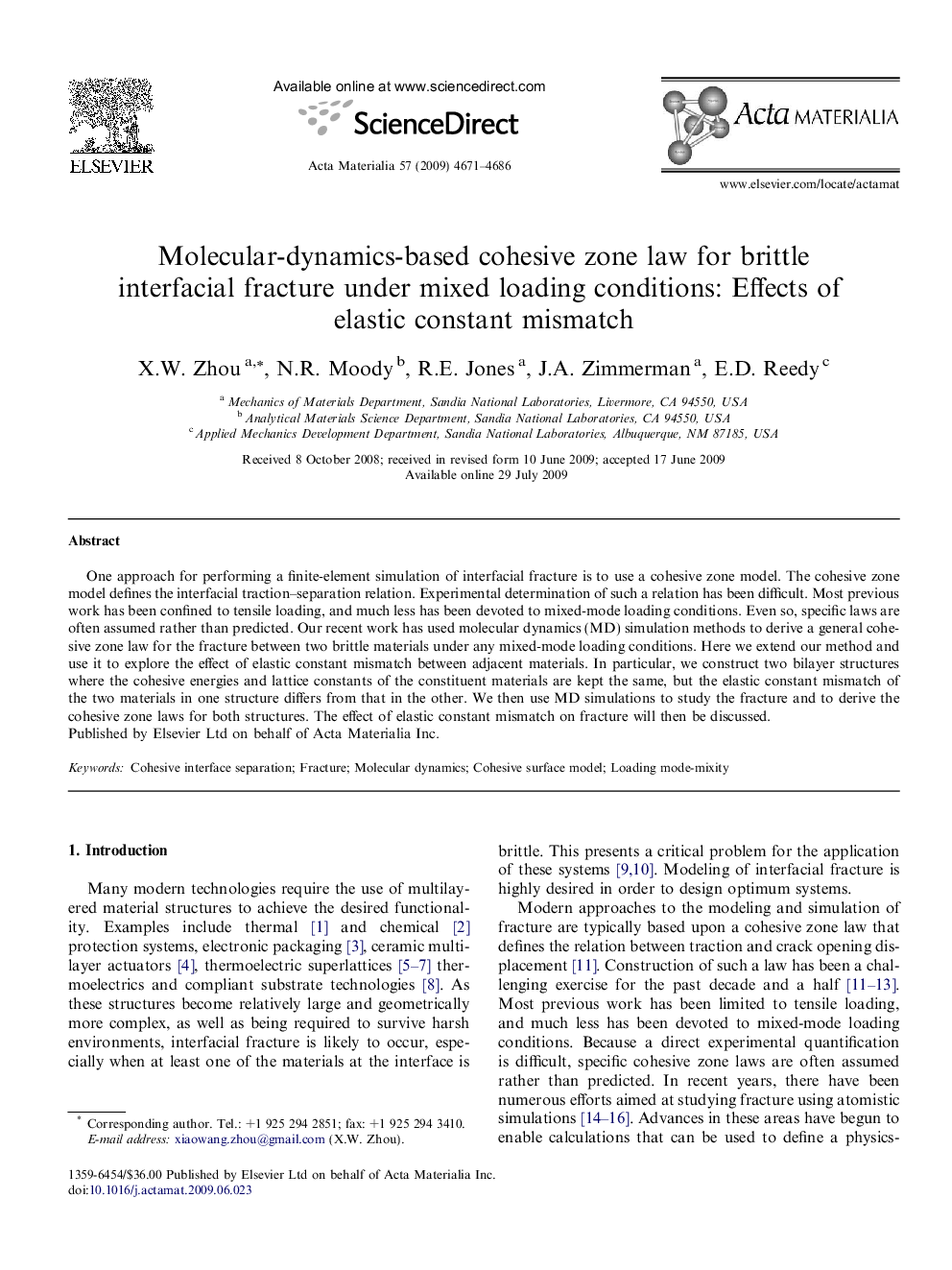| کد مقاله | کد نشریه | سال انتشار | مقاله انگلیسی | نسخه تمام متن |
|---|---|---|---|---|
| 1448011 | 988662 | 2009 | 16 صفحه PDF | دانلود رایگان |

One approach for performing a finite-element simulation of interfacial fracture is to use a cohesive zone model. The cohesive zone model defines the interfacial traction–separation relation. Experimental determination of such a relation has been difficult. Most previous work has been confined to tensile loading, and much less has been devoted to mixed-mode loading conditions. Even so, specific laws are often assumed rather than predicted. Our recent work has used molecular dynamics (MD) simulation methods to derive a general cohesive zone law for the fracture between two brittle materials under any mixed-mode loading conditions. Here we extend our method and use it to explore the effect of elastic constant mismatch between adjacent materials. In particular, we construct two bilayer structures where the cohesive energies and lattice constants of the constituent materials are kept the same, but the elastic constant mismatch of the two materials in one structure differs from that in the other. We then use MD simulations to study the fracture and to derive the cohesive zone laws for both structures. The effect of elastic constant mismatch on fracture will then be discussed.
Journal: Acta Materialia - Volume 57, Issue 16, September 2009, Pages 4671–4686